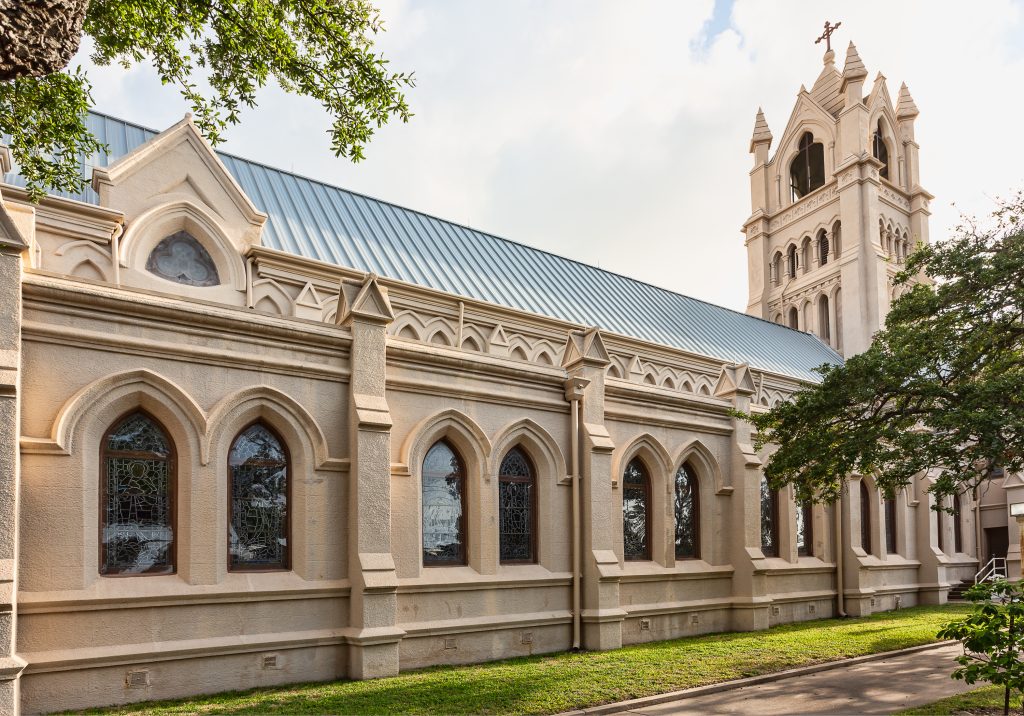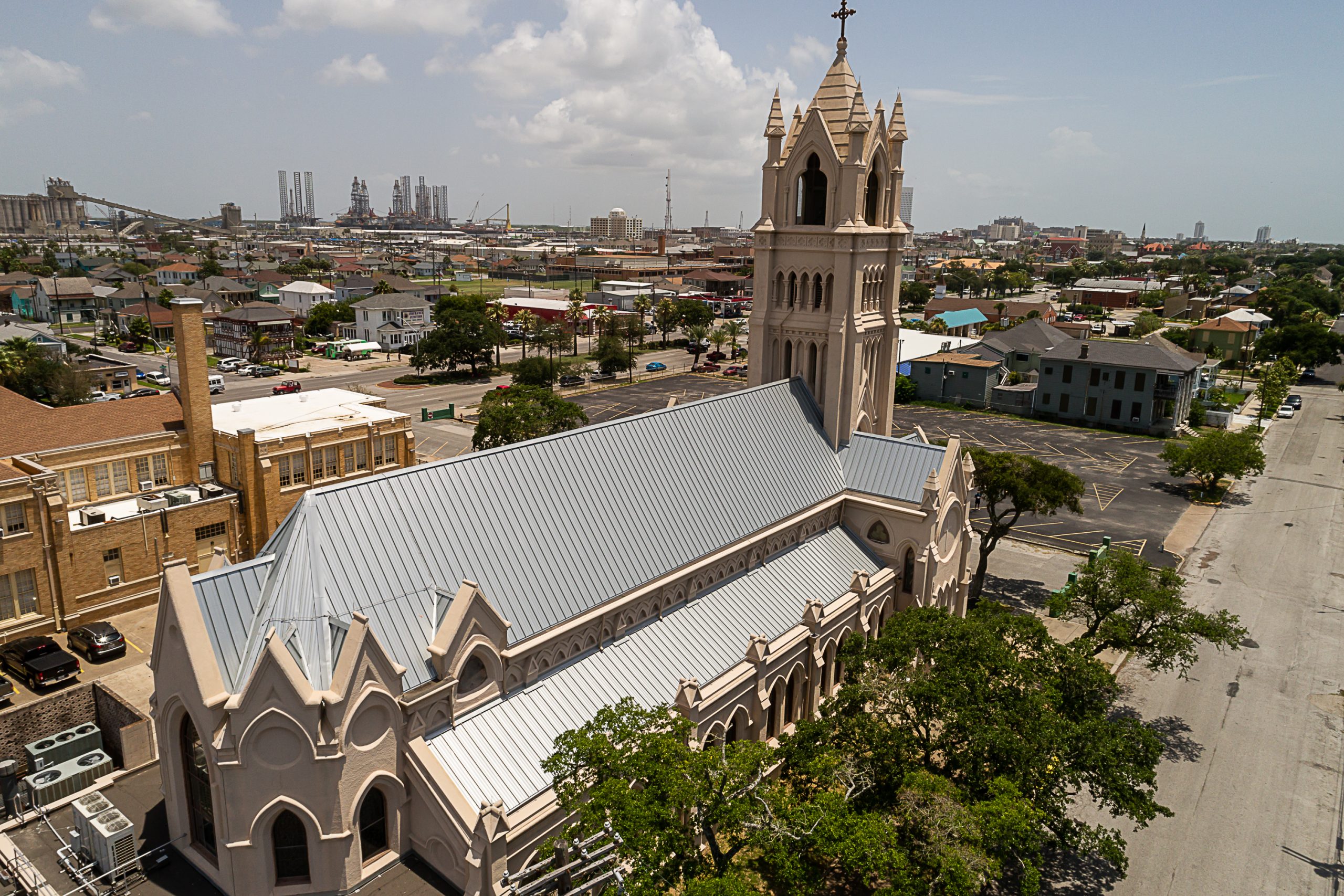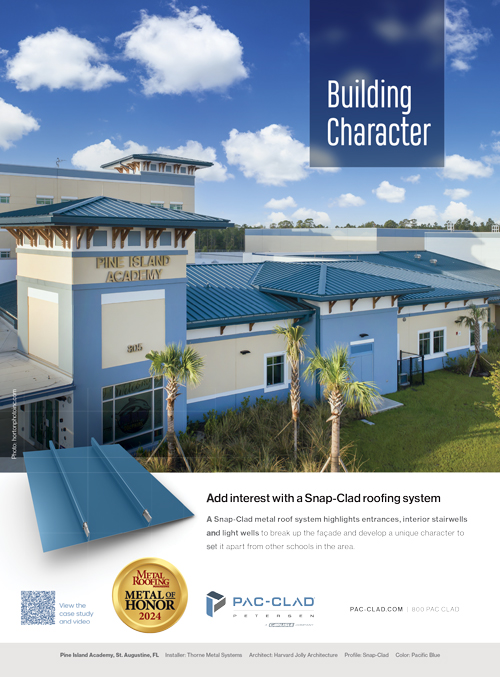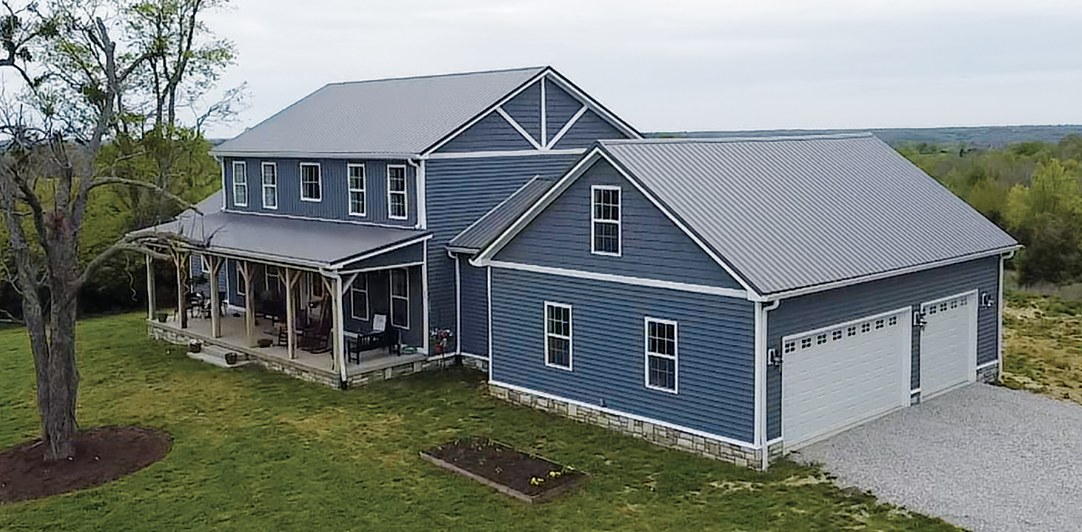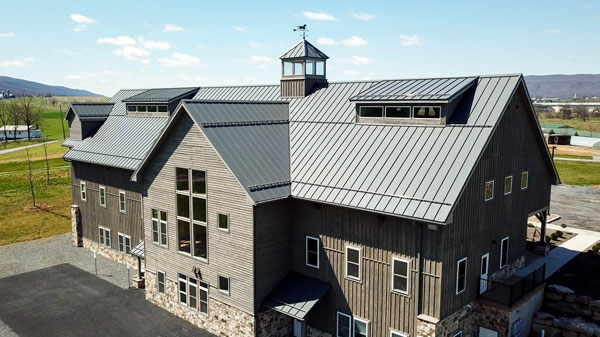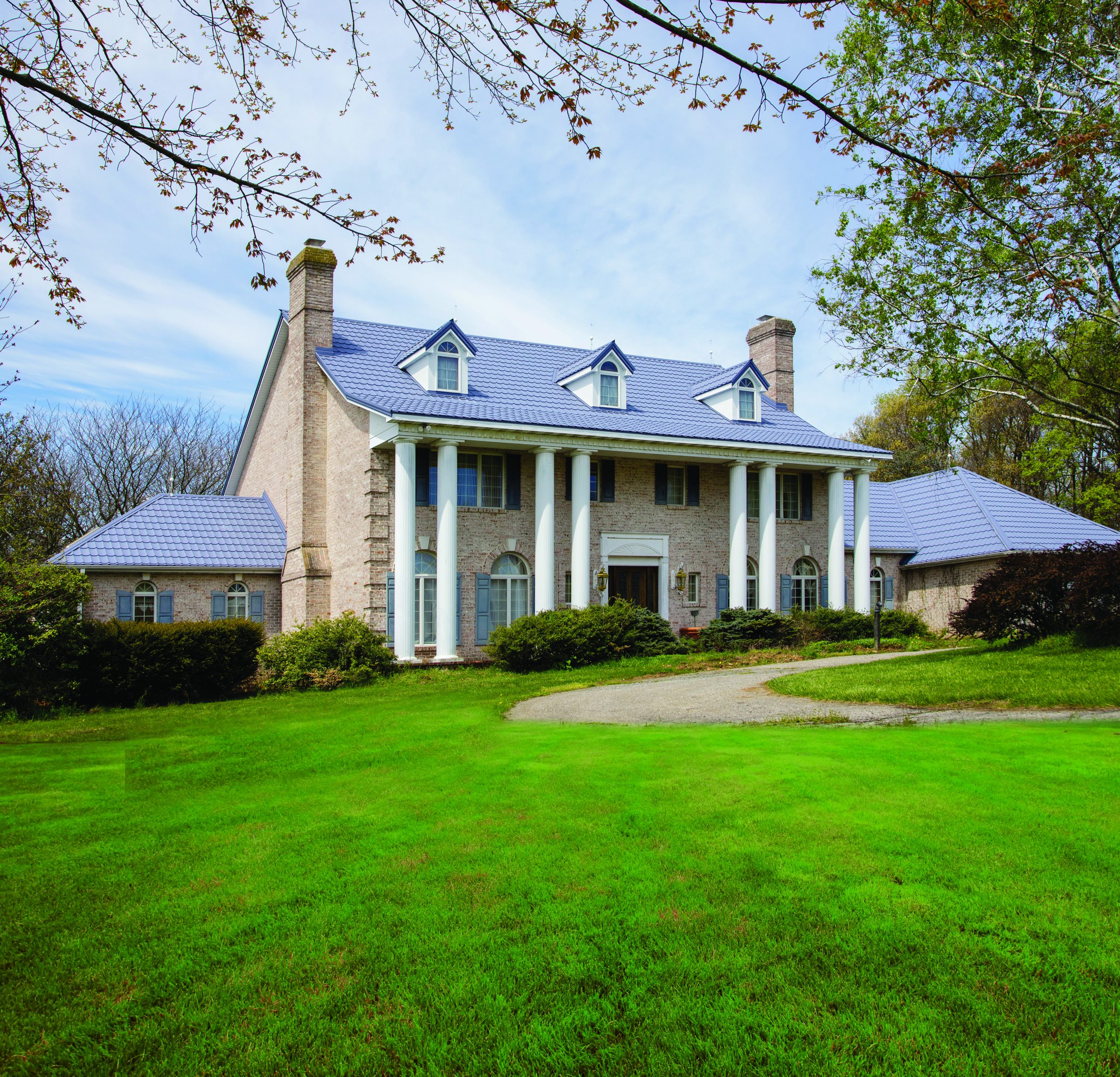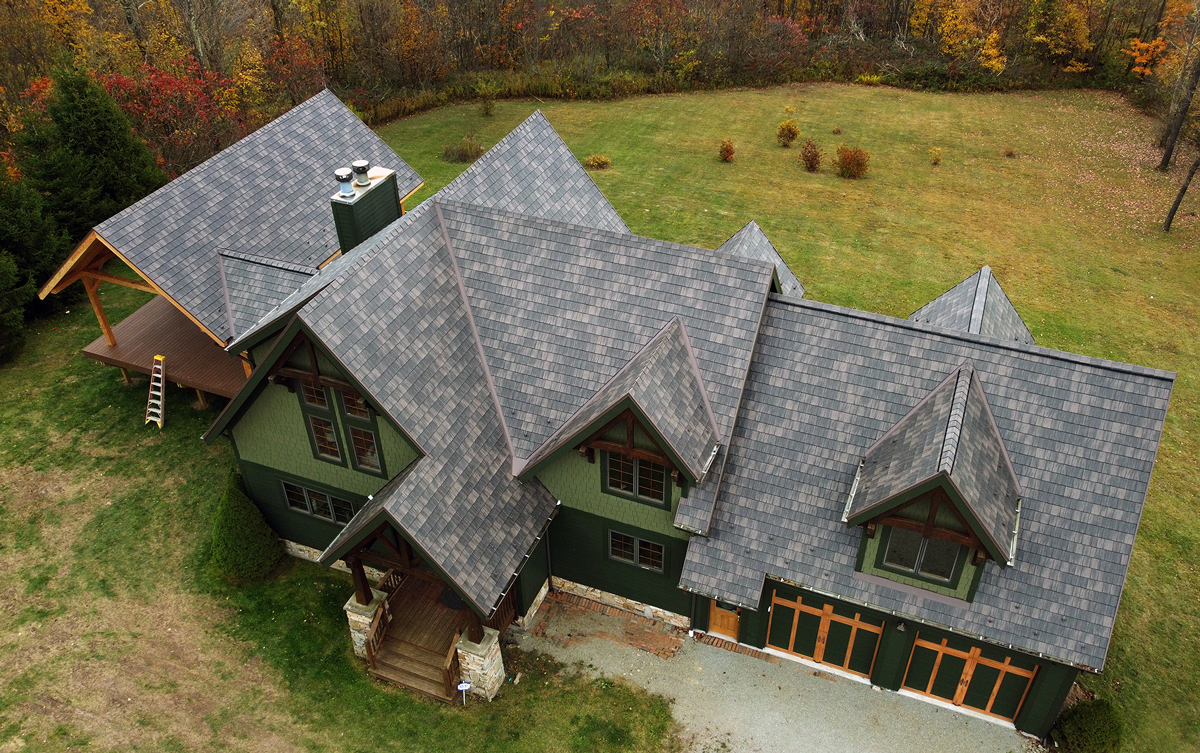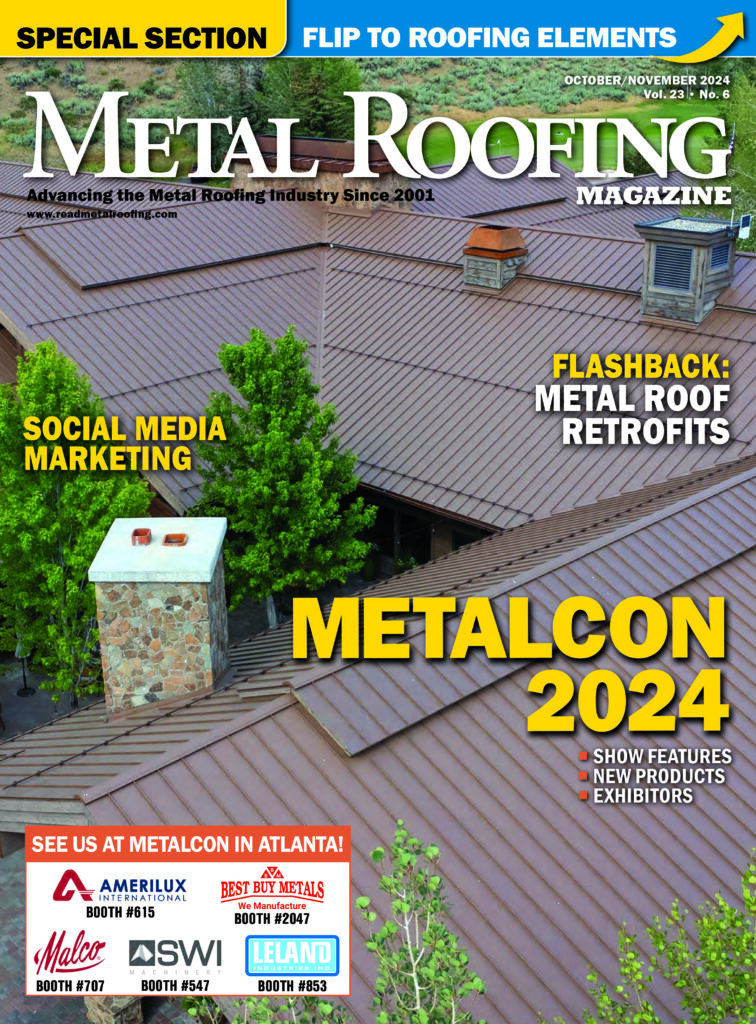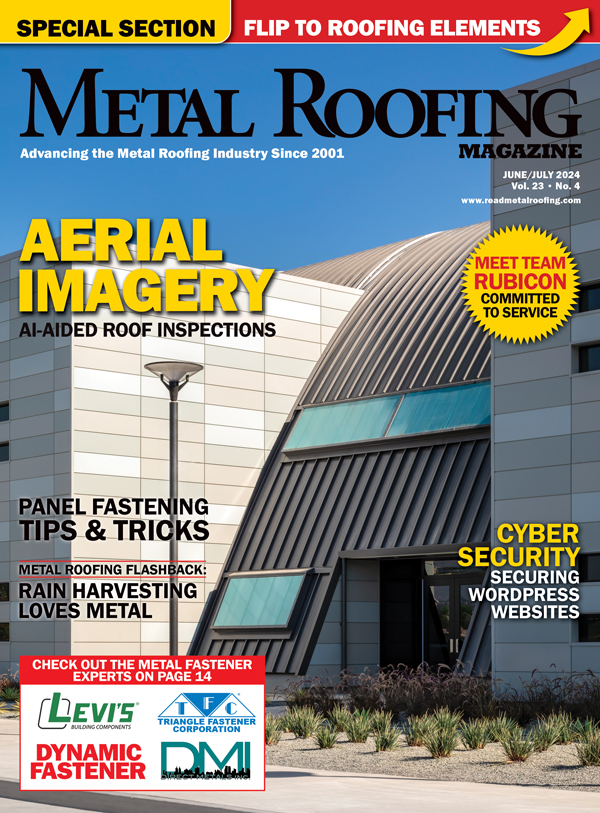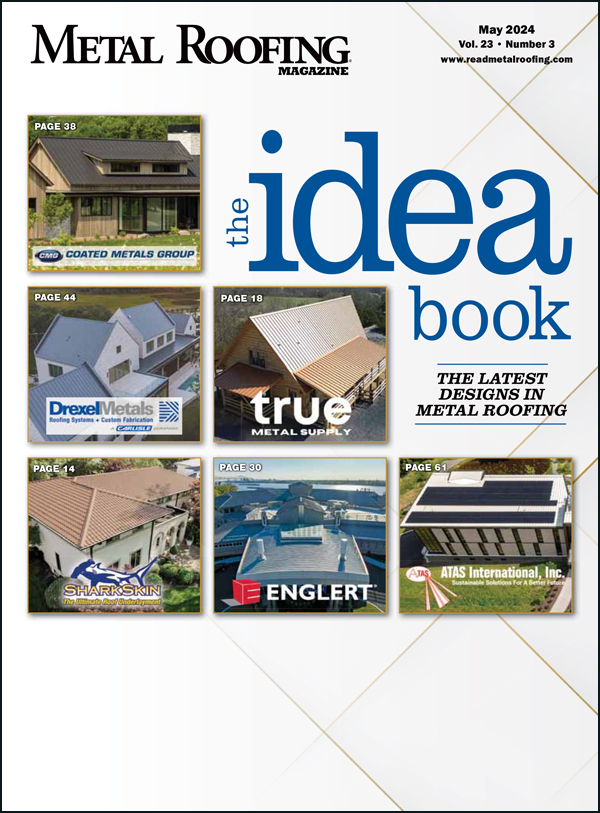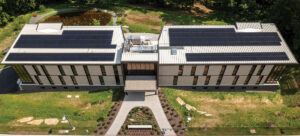For building owners in the island city of Galveston, Texas, good design isn’t only about aesthetics—it’s also about survivability. Their city was nearly wiped off the map in the devastating hurricane of 1900, so every renovation decision comes down to a balance of beauty and resilience. The new metal roof installed on the city’s historic St. Patrick Church meets both criteria, helping to secure the structure’s landmark status for decades to come.
Members of this church are well aware of their island home’s vulnerability. They lost their first sanctuary to storms in 1871, just a year after it was built. That wooden structure was replaced with a grand Gothic masonry church in 1877. However, that building was, in turn, destroyed when its massive spire—then the tallest in Texas—collapsed onto the sanctuary during the Great Hurricane of 1900. The current church was completed in 1902 to be every bit as grand (though with a shorter spire).
Just five years later, the parish decided to heed the City of Galveston’s call to raise the elevation of all structures as part of a broad flood-prevention effort. A crew of 100 men turned manual screw jacks to lift the church by 5″. This move saved the church from certain flooding during Hurricane Ike in 2008, according to Reverend John Bok, a parish priest.
“When they elevated this church, they saved it,” he said in a Federal Emergency Management Agency (FEMA) case study on the hurricane. “Without their work, we would have had terrible damage inside our church, not only in Hurricane Ike, but in other storms, too.”
A Renovation Built to Endure
So, given this stormy history, it’s not surprising that, when it came to replacing the building’s aging asphalt-shingle roof, church administrators were every bit as concerned about performance as looks. This is what led them to the local firm of Morgan Roofing, LLC, and Snap-Clad aluminum roofing panels from Petersen’s PAC-CLAD lineup in a silver metallic finish. According to Morgan Roofing’s owner, David Morgan, installing the 9,000 square feet of .040-gauge panels was a labor-intensive process. “It was a particular kind of job. It was unusual in that we only do four or five jobs like this per year—it was a fairly complicated roof,” he said. “When you work on historic buildings, the buildings tell a story. You’ll uncover something and say, ‘Well, yes, this needs to go here.’”
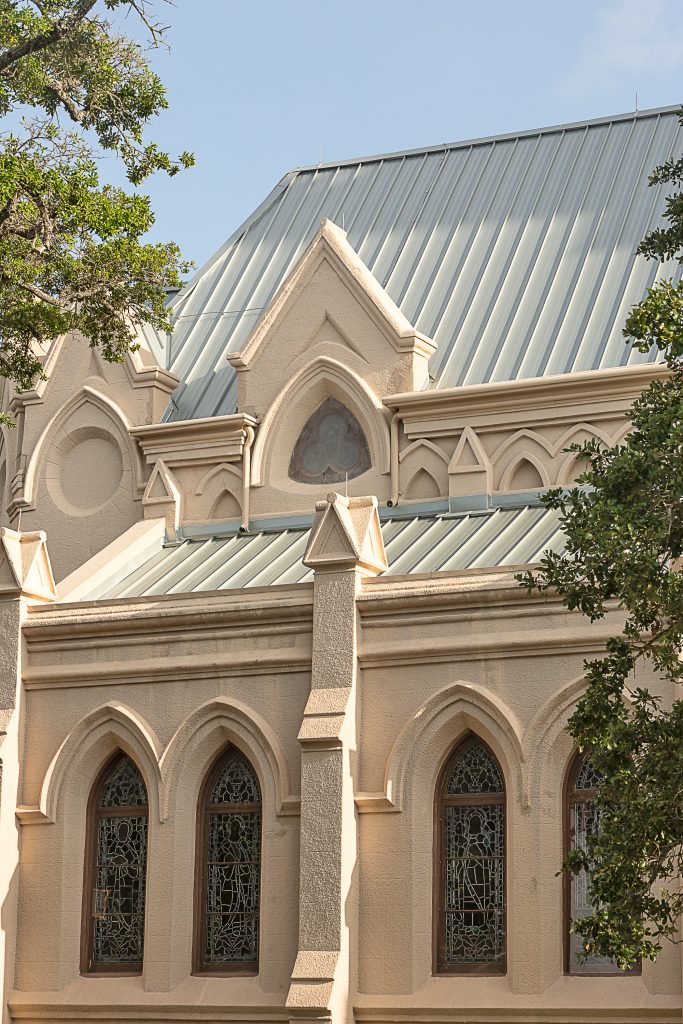
The building’s gutter system offers one example of the complications installers faced. The box-style gutters are built into the parapet walls surrounding the roof, with downspouts connecting at varying intervals along the gutters’ full length. “To re-create the existing piece, it took 47 breaks in one piece of metal,” Morgan shared.
The roof’s steep slope also required some creative thinking once panel installation began. This included designing some of their own equipment to improve both safety and efficiency. “We had to build ‘chicken ladders’ to hook over the ridge of the building,” Morgan said, citing one such example. “That way, four guys could work on the panels at once.”
One easy decision for the roofers, Morgan said, was the choice of PAC-CLAD aluminum panels for the job. Given the severe weather Galveston so frequently experiences, the warranty was important and, “When you’re doing a 100-year roof, you want to do a good job.” MR
